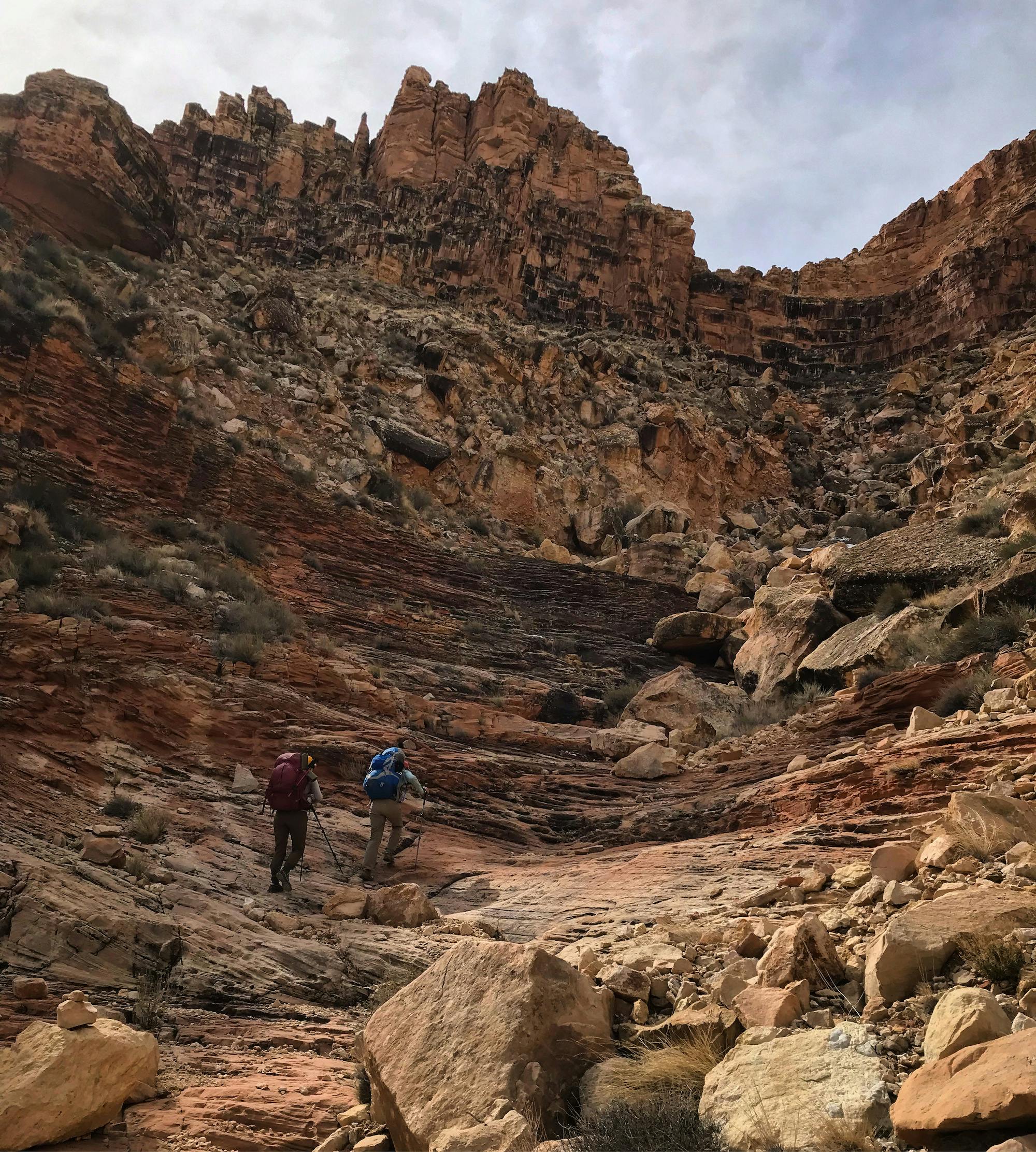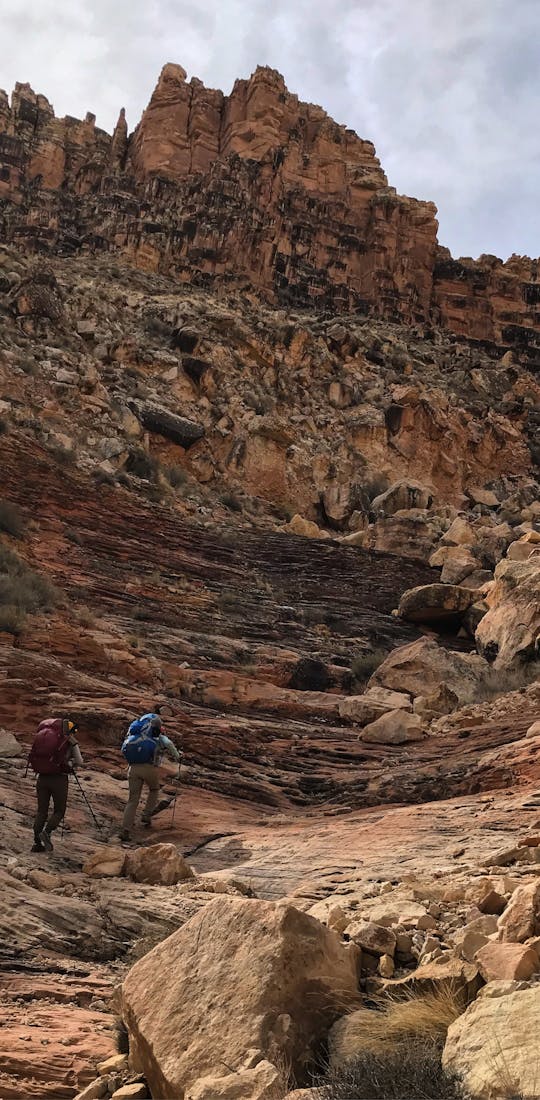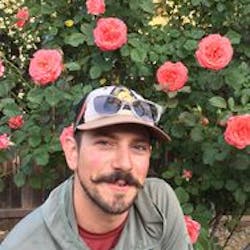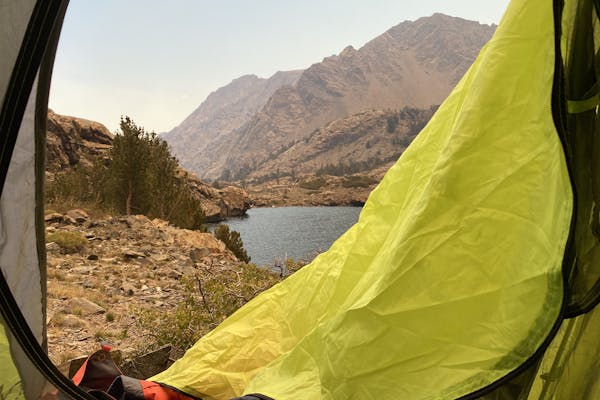It's a familiar scene: I’m standing somewhere in the depths of the Grand Canyon,
squinting into the morning sun trying to spot our route through the cliffs and stone terraces. I follow the trail with my eyes to the highest point visible from our vantage, several miles and thousands of vertical feet away. We are going to hike all the way up there today. It's probably going to take all day. The group is physically fit and I’ve been mentally preparing them for today, our big hike out. We are ready to crush. Grasping for some inspirational words, I stammer, “Uh, remember everyone, ‘slow and steady wins the race.’' It sounds cliché, but the moral of Aesop’s classic, “The Tortoise and the Hare,” is relevant when it comes to maximizing your time and energy efficiency on the trail.
***
Hiking fast and hard feels good. It’s like a workout, you push through the burning muscles and heavy breathing for the rush of exercise. It’s also fun to set speed goals and really challenge myself physically. For long hikes, however, it is beneficial to pace yourself for the long haul. On uphills I often find myself going as hard as I can for a while, then I hit a wall and need to stop, take a drink, catch my breath, take off a layer. When I resume hiking, my legs are a little stiff and it feels like my pack just got heavier. This pattern of pushing hard and taking frequent breaks tends to be inefficient with time and energy: you will be exhausted and it will take longer to reach your destination. Hiking more slowly also has pros and cons. A slower pace lets you be distracted by a neat insect or wildflower and discover the wonders of nature that might pass out by if you're rushing to make time. If you’re too relaxed, however, you can burn precious daylight and end up behind schedule. My secret to making great time and not being wrecked after the hike is simple: Be a tortoise on the uphills, and a hare on the flats.
When I’m facing a prolonged climb, like pushing for a summit or hiking out of the Canyon, my uphill hiking pace is driven by breathing. I generally don’t want to be huffing and puffing so hard that I can’t hold a conversation. There is always a pace that is slow enough so that you can hike and talk at the same time. When I’m breathing slowly and deeply, hiking up a steep incline, I can drink from my bladder while maintaining my tortoise pace, filling my mouth while breathing through my nose and swallowing the mouthful between breaths. The slow and steady pace allows me to complete the uphills without having to gasp for air and I can settle into a continual but mild burning in my legs.
I also slow down for prolonged downhill hiking. This reduces the impact on my leg joints and enables me rely on my trekking poles for balance and stability. Slowing down for downhills also helps me to pay closer attention to my steps, reducing the chance of a misstep or twisted ankle. Once the trail flattens out I’ll pick up the pace. This way I make great time hiking fast on terrain that takes less effort. By balancing my hiking pace with the difficulty of the terrain, I can stabilize my level of physical exertion and hike for longer periods between breaks.
Deliberately hiking slower than you are capable of can be difficult for some people but I assure you: hiking slowly eats less time than taking frequent breaks. The key to making good time is to take fewer and shorter breaks. Period.
Taking breaks is inevitable and important for self-care on a long hike. I use a system of ‘packs-on breaks’ and ‘packs-off breaks.’ If you need to drink water, grab a quick snack, look at the map- keep your packs on. This prevents people from getting too comfy and losing track of time. For a longer respite I’ll do a packs-off break: remove layers, go to the bathroom, eat lunch, etc. The goal is to keep breaks short and efficient, especially when hiking a multi-day trip. Taking a big pack off and on again and again can be exhausting!

The long hike out has gone by quickly. We’ve been chatting all day, fantasizing about food and showers, remembering the Canyon’s revelations from the previous days, taking moments to eat gummy worms and to take in the expanding views as we hike higher and higher out of the magical abyss. As we crest over the rim, we take one last “packs-on break,” posing for the victorious group-photo before bidding the Canyon farewell and taking our final heavy steps toward the car. Packs off.




